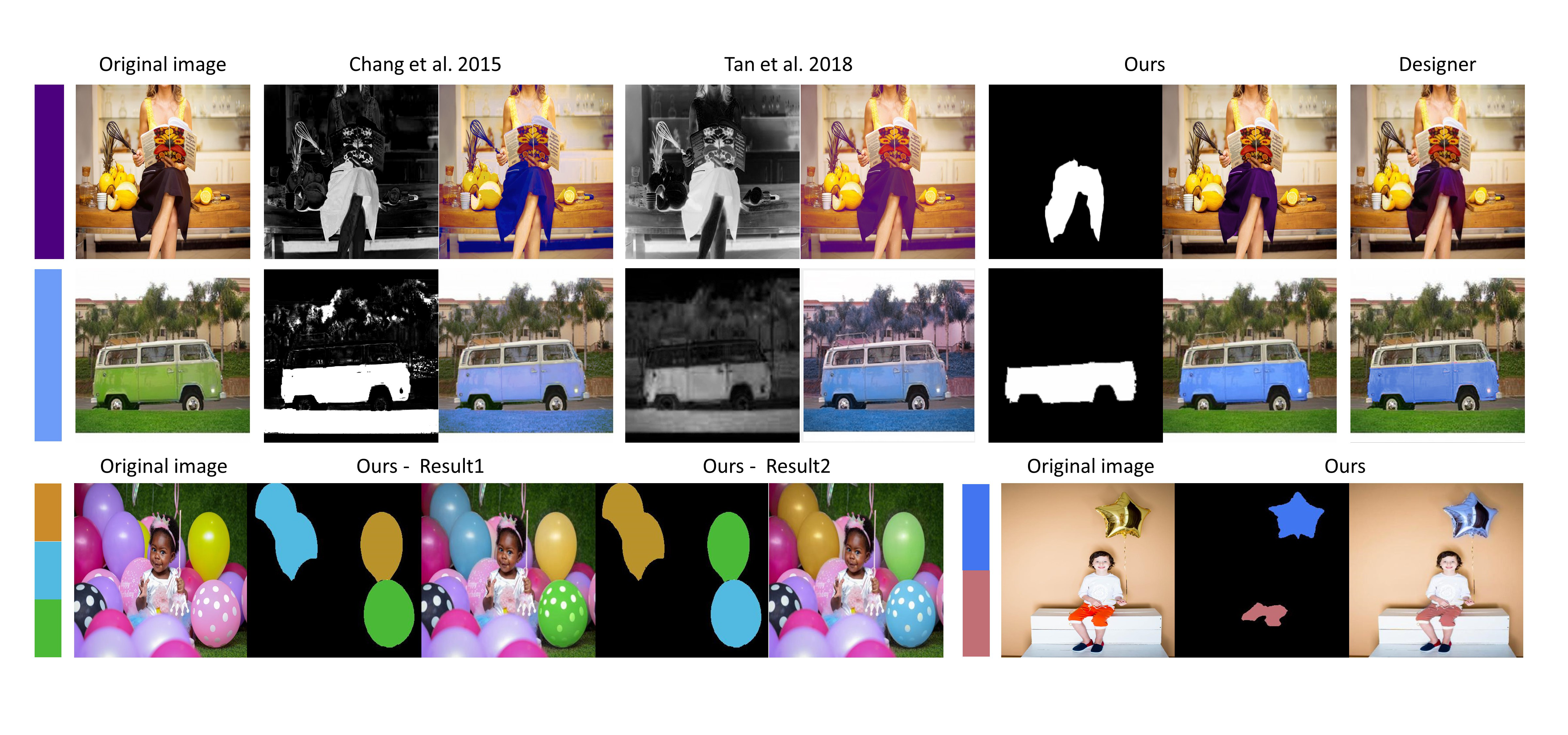Selective Region-based Photo Color Adjustment for Graphic Designs
Nanxuan Zhao, Quanlong Zheng, Jing Liao, Ying Cao, Hanspeter Pfister, Rynson W. H. Lau
External link (DOI)
View presentation:2021-10-29T15:00:00ZGMT-0600Change your timezone on the schedule page
2021-10-29T15:00:00Z

Abstract
When adding a photo onto a graphic design, professional graphic designers often adjust its colors based on some target colors obtained from the brand or product to make the entire design more memorable to audiences and establish a consistent brand identity. However, adjusting the colors of a photo in the context of a graphic design is a difficult task, with two major challenges: (1) Locality: The color is often adjusted locally to preserve the semantics and atmosphere of the original image; and (2) Naturalness: The modified region needs to be carefully chosen and recolored to obtain a semantically valid and visually natural result. To address these challenges, we propose a learning-based approach to photo color adjustment for graphic designs, which maps an input photo along with the target colors to a recolored result. Our method decomposes the color adjustment process into two successive stages: modifiable region selection and target color propagation. The first stage aims to solve the core, challenging problem of which local image region(s) should be adjusted, which requires not only a common sense of colors appearing in our visual world but also understanding of subtle visual design heuristics. To this end, we capitalize on both natural photos and graphic designs to train a region selection network, which detects the most likely regions to be adjusted to the target colors. The second stage trains a recoloring network to naturally propagate the target colors in the detected regions. Through extensive experiments and a user study, we demonstrate the effectiveness of our selective region-based photo recoloring framework.